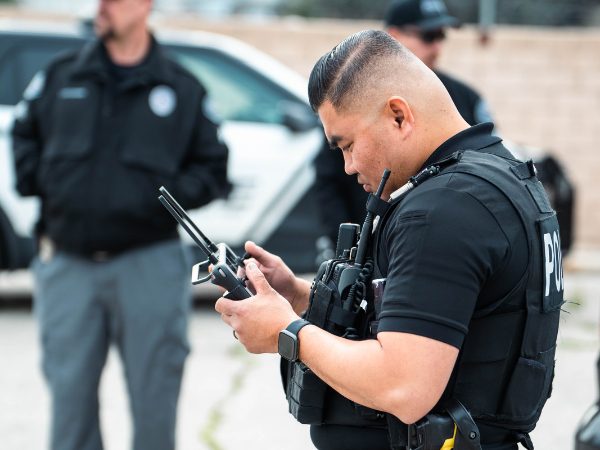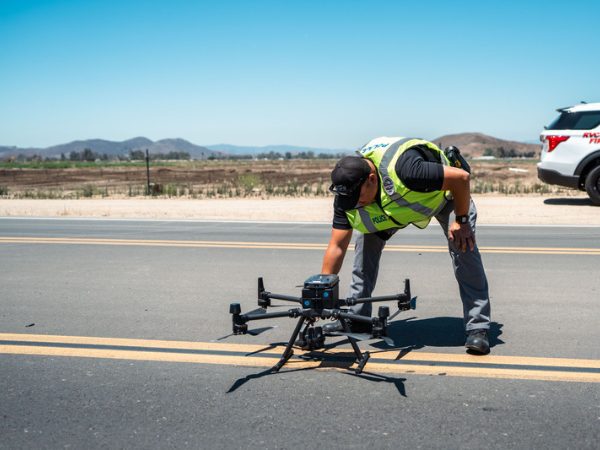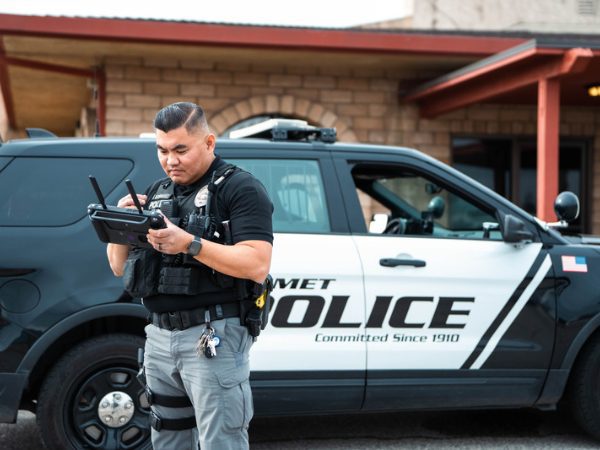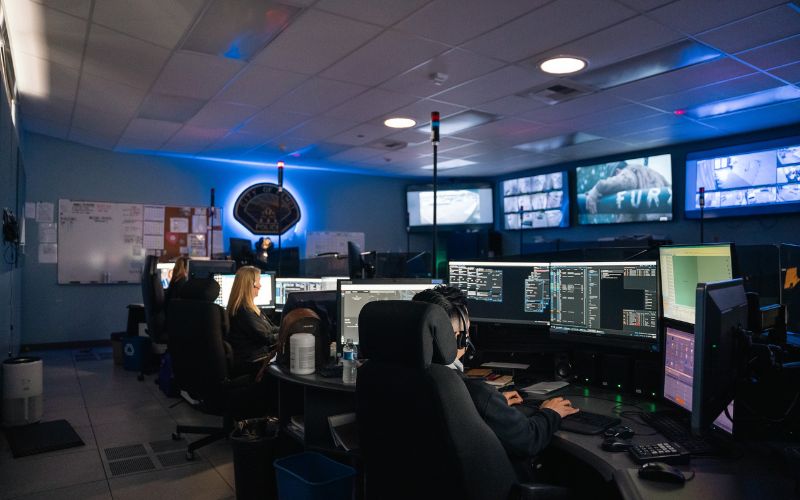The purpose of the Hemet Police Department’s Drone Program is to provide airborne support to police operations in a safe, responsible, and transparent manner to preserve the peace, reduce response times, and increase the quality of life in the city of Hemet.
Small, remotely operated Unmanned Aerial Systems (UAS), also called drones, are an efficient and effective way of providing law enforcement critical information to respond to calls for service and emergencies or to conduct criminal investigations. Some examples include; providing an overhead view of an area or incident for ground personnel, safely clearing the interior of buildings, providing detailed documentation of crime and accident scenes, and searching for lost or missing persons.
The Hemet Police Department is committed to maintaining transparency with the public. The Department’s Transparency Portal tracks all drone flights launched by the department, allowing citizens to view recent flight activity and program details, ensuring accountability and trust with the public.
To view the recent flight paths of our drones, visit: Hemet Police Department Drone Flight History



frequently Asked Questions
The most frequently asked questions about the Drone as a First Responder Program (DFR).
What is a drone or UAS?
Where are the video and photos taken by the UAS stored?
Who has access to the video and photos?
How is my privacy protected?
Can foreign countries gain access to HPD’s drone data or information through a drone’s built-in software?
What training do UAS pilots undergo?
What rules and regulations must HPD’s UAS pilots follow?
Why Does HPD use UAS rather than helicopters?
Helicopters and other manned aircraft (air support) are costly. HPD relies on the Riverside County Sheriff’s Department for air support. UAS can be used in various ways that supplement mutual aid air support requests.














